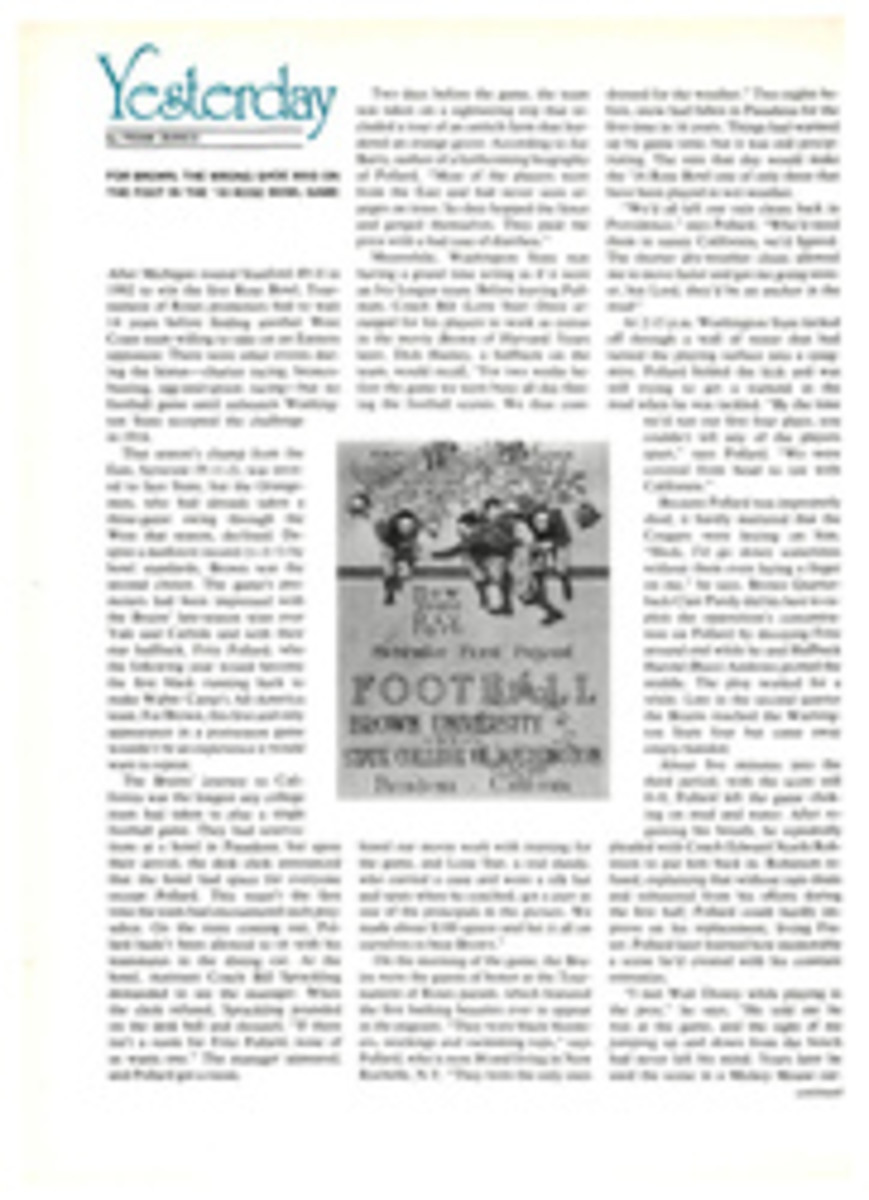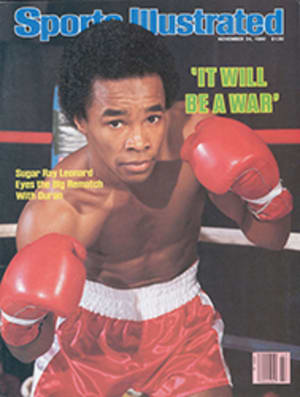
A DIFFERENT KIND OF TRIPLE PLAY: FROM THE GOOD TO THE BAD TO THE BORING
Whether you want to jog around the block near your hotel or take a 40-km. run through Berlin's Grunewald Park—where the deer and the wild boar play—A Runner's Guide to Europe (Penguin Books, paperback, $5.95) is just what you need. Coauthors Jere Van Dyk, a sometime 4:00.1 miler from the University of Oregon, and Aden Hayes have done their homework and put together a compendium of running venues covering 24 cities from Helsinki to Florence.
The Guide offers an assortment of city runs and tells how to get to the most suitable parks, forests, tracks and boulevards. The authors heartily endorse riding the train, subway or bus in sweat suits to more distant courses.
They tell you what to wear; when to run to beat the traffic; where not to run and what cultural attractions, restaurants and pubs are along the route. They also fill the reader in on local customs, climate and personal safety, especially as it pertains to female runners—plus information about pharmacies, hospitals and swimming, tennis and squash facilities.
Van Dyk's and Hayes' favorite courses include Edinburgh's Holyrood Park, Paris' Bois de Boulogne, Oslo's Sognsvann forest, Copenhagen's Jaegersborg Dyrehave (3,500 acres of woods, hills and ponds, which, the authors claim, is perhaps the best running site in Europe), Brussels' For‚Äö√†√∂‚Äö√ë¢t de Soignes and Helsinki's Pirkkola Sports Park. A Van Dyk-Hayes special: a predawn lope to the Acropolis for an inspiring view of Athens and the sea beyond.
Though the Guide lists running loops in all 24 cities, Rome is described as "a tough course" and Milan as a place with comparatively few places for runners to "stride out."
The Van Dyk-Hayes directions can get quite complicated as they suggest several options for running a course—varying distances and degrees of difficulty—while trying to keep the runner from getting lost. Schematic maps would have helped.
But that omission is balanced out by:
A glossary so the dehydrated runner can order iced tea in Greek (krio tsai), yogurt in Finnish (jugurtti) or dark beer in Swedish (mörkt öl).
Anecdotal wisdom. Women runners should avoid Dublin's Connelly Street train station area at night because it gets "a bit ugly," the authors, who apparently have run every course in the Guide, tell us. They also advise buying cloudberries (known as laaka) in Helsinki's central outdoor market after a run and not to worry about the bats in Madrid's Retiro Park because they hang out only along a short stretch. The National Gardens, they say, are "the only spot in central Athens where you can smell the eucalyptus over the exhaust fumes," and they warn you to keep off the grass in Viennese parks.
Whether you're in Europe on business or vacation, the Guide says that running offers a special advantage. Write Van Dyk and Hayes, "Paris at dawn—before the cars, the horns and the traffic jams—is quiet, clear and stunning; and it can best be seen on a run."
—RICHARD ROGIN
The evidence on Bjorn Borg, as it filters through on the television screen and in news accounts, is that he's a pleasant young man, somewhat shy and diffident, fiercely protective of his privacy, deeply in love with his radiant bride—and one of the best tennis players ever to step on a court.
But Borg does not appear to be an inordinately interesting fellow, and Bjorn Borg: My Life and Game (Simon and Schuster, $11.95), written in collaboration with Eugene L. Scott, is not an interesting book. Like Nancy Lopez' The Education of a Woman Golfer (SI, Nov. 19, 1979), the book seems to exist for no other reason than the celebrity of its subject; it discloses nothing of particular moment about Borg's life, and as a tennis instruction manual it has little value.
In fact, Borg remarks that "I have broken nearly every rule recommended by instruction books over the past fifty years." He sees tennis as "a game of instinct and common sense rather than proper grips and tedious tips." What he's saying, in other words, is that the advice he offers isn't going to be much more helpful than the advice anyone else offers.
That being the case, why then should one read Bjorn Borg: My Life and Game? Well, if it interests you, there's a complete list of the products he endorses—nearly 40 of them, by my count—ranging from a Bjorn Borg calendar to a Bjorn Borg doll to a Bjorn Borg soft drink. There's the hot disclosure that Borg thinks American television is the cat's pajamas: "Do you know that people from Sweden come to the U.S. on vacation for two weeks, get a hotel room, turn on the color TV and never leave the room?"
Borg tells us that in his matches against Roscoe Tanner on a fast surface, his return of service is crucial: "Take that away from me and I might lose to Tanner every time." He says that "the fury of a McEnroe-Borg rivalry has not yet had a chance to boil over." He reminds us that as a teen-ager he was regarded as the "Bad Boy" of Swedish tennis and had to bring his temper under control by an act of willpower.
What's the point of all this? So far as I can tell, it is to "humanize" Borg, to make him seem less the iceman and more the ordinary guy. But is that really necessary? Why can't we just admire Borg for his stupendous skills, and leave it at that? He belongs on the tennis court, not in the pages of a perfunctory, exploitative book.
—JONATHAN YARDLEY
John Jerome started out with an imaginative idea for a magazine article: an examination of the physiological forces at work when an athlete hits the "sweet spot"—when he or she makes a "perfect" leap or swing or throw. But Jerome made an entire book out of it, a long one, and that was a mistake.
The book is The Sweet Spot in Time (Summit Books, $13.95). It runs to nearly 350 pages, too many of which seem to exist merely to fill space. Although the book is well-intentioned and informative, so much of it—especially in the first half—is extraneous or discursive that the reader's patience is soon exhausted.
An example of Jerome's sweet-spot theory that's doubtless still vivid in the minds of many fans occurred in the fourth game of the 1980 World Series. With the second of the two homers he stroked that afternoon, Willie Aikens hit the sweet spot right on the nose. From the exquisite crack of bat against ball, to the ball's majestic flight that carried deep into the rightfield bullpen, to the heroic follow-through with which Aikens finished off his feat—it was a moment of sheer sports perfection.
What Jerome seeks to explain is how and why such moments occur. His explorations are based in large part on the relatively new science of biomechanics, defined by one of its leading practitioners as "the use of objective techniques to analyze patterns of body movement, the timing of body movements, and the forces which create or result from movement."
The fundamental point of biomechanics, Jerome writes, is that "every human movement, from raising a cup of tea to the lips to pole-vaulting eighteen feet, is a product of levers moving through arcs." Later he writes: "Once one begins to comprehend human movement in terms of levers and arcs, the necessity, in sports, for good arcs—for true trajectories, accurate timings, impeccable meetings of subject and object—becomes apparent. It is inescapable."
Perhaps so. But between those two statements lie fully 170 pages of divagation. Before getting into a specific discussion of the various elements of sports performance, Jerome insists on taking the reader on a tour of the human body: Anatomy 101. He makes an earnest effort to write science for the layman, but he ends up with prose that patronizes the reader: too many strained metaphors and similes, too much cuteness, too little clear explanation.
When at last he finishes the anatomical tour d'horizon, the book picks up. There are enlightening discussions of the revolution in sports equipment (shoes, for example, better designed to accommodate the workings of the human foot), the use of steroids and amphetamines, the evolution of the East German sports factory, the research being conducted at such centers of sports science as Penn State and Ball State.
All of this is fine, and Jerome's enthusiasm for his subject is attractive. But his book fails on three counts. Its prose is irritating and self-indulgent. It doesn't make complex scientific information comprehensible to the general reader. And it drifts off onto so many highways and byways that it loses sight of its central subject. Too often you find yourself asking: "But what does this have to do with the sweet spot?" Any book that loses its main theme is a book in trouble.
—JONATHAN YARDLEY

